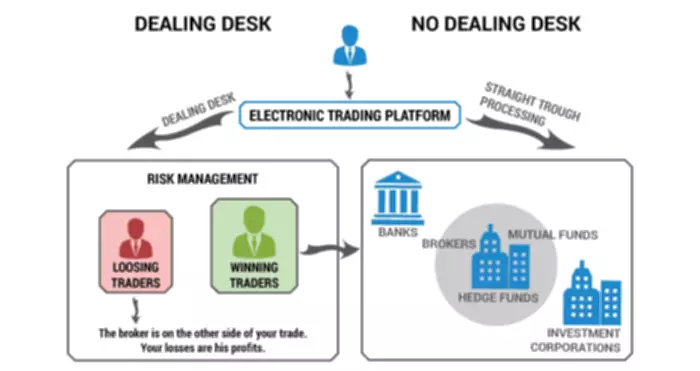Essentially, it happens when the developers resolve to close down the protocol, and not return the funds. So, you discovered the project that you simply liked, purchased its tokens, locked them up, and then everything shut down. The devs are gone, your cash is gone, and there’s no rationalization or refund. Low liquidity would mean that the bid-ask spread is tight, there are fewer provides, and fewer persons are buying and selling. As such, liquidity is an important facet that merchants must think about when trading a selected crypto.
- Real World Assets are off-chain belongings, that are tokenized and introduced on-chain for use in DeFi.
- This does not embrace any coins you could have obtained as a reward, after all.
- We make it easy so that you simply can participate, and also you don’t want an enormous quantity of crypto belongings to get started.
- This can be attractive for these looking to maximize their returns and potentially enhance their total investment portfolio.
- Aside from the LP token they received, users are also rewarded with native or governance tokens, as long as their tokens stay in the liquidity pool.
Click on the “pool” button after which the “new position” hyperlink, select the Uniswap trading pair you need, and see how the rewards work out. Ethereum and Tether are some of the well-liked pairings on Uniswap, so we’re going with these choices. For individuals who want to try liquidity mining, starting with a modest amount might be a good idea. Investing all of your hard-earned money into liquidity swimming pools and simply hoping for one of the best will often result in disappointing outcomes. They can even declare governance tokens and consequently vote on projects and other important selections made by stakeholders. Liquidity mining allows for a extra inclusive system to evolve, one in which even small(er) investors can contribute to the expansion of a market.
Is Liquidity Mining The Same As Yield Farming Or Staking?
Liquidity mining is a passive revenue strategy in which cryptocurrency holders successfully lend their assets to a decentralized trade (DEX) in return for rewards that come from buying and selling charges. Liquidity mining in DeFi means offering your tokens to liquidity swimming pools and getting rewards in trade. These tokens are then used by decentralized exchanges to settle transactions. For buyers with a better risk urge for food, the dashboard can be filtered by Net APY. Nansen calculates impermanent loss and subtracts it from the pool’s supplied APY, to show the actual return. These insights enable mercenary farmers to maneuver from liquidity pool to liquidity pool, soaking up early APY rewards and for the extra cautious liquidity supplier to search out giant properly established swimming pools.

While this could be an effective way to earn extra crypto revenue, it does come with numerous risks. The crypto worth is highly risky, and LPs are at all times susceptible to impermanent loss. In the context of cryptocurrency, liquidity is a time period describing the ease of buying for or selling cash and tokens.
Liquidity Mining Vs Staking: What Are The Differences?
These LP tokens may be staked in a farming contract that rewards users with additional tokens over time. For transactions to happen in DeFi, there must be crypto, and liquidity swimming pools serve the identical function as market makers in conventional finance. One of the principle dangers standing between you and success is impermanent loss.
Then, when somebody desires to swap one asset for the opposite, the funds are drawn from the pool. That means, there isn’t a ready interval and the swap is accomplished instantly. Traders, due to this fact, avoided them, which meant that liquidity stayed low. This changed across the time when DeFi emerged as a result of a model new methodology of securing liquidity — Automated Market Makers (AMMs). Automated Market Makers are exchanges that don’t use order books to match consumers with sellers and safe a token change. Before the emergence of decentralized finance, crypto assets had been either actively traded or stored on exchanges and hardware wallets.
What Are The Dangers Of Liquidity Mining?
However, given enough time, it’s easy to build up a large revenue from it. There is in fact all the time the chance that there is some bug within the code of the Smart Contract that could be exploited. With DeFiChain, this risk is mostly low (and a lot decrease than with Ethereum), since the blockchain is non-turing-complete already and there are much fewer potential errors. In the long run, the ratio thus routinely balances itself out and always adapts to the real, independently determined worth of the free market.

Once participants give liquidity to a liquidity pool, they can earn rewards. These rewards are generally identified as “LP” (Liquidity Pool) rewards, and they are allotted among liquidity providers based on their pool share. The story behind decentralized finance is an thrilling and interesting one, and the sphere itself has spawned quite a few revolutionary ideas, certainly one of which is liquidity mining.
After DeFi grew to become mainstream in mid-2020, decentralized exchanges (DEXs) started becoming extra popular. These are crypto exchanges that operate in a decentralized ecosystem and aren’t controlled by a centralized entity. These platforms have been trying to replace centralized exchanges (CEXs) for years. Staking, then again, is a process the place crypto liquidity mining users can earn rewards for holding onto and “staking” sure cryptocurrencies or tokens. The rewards are paid out through newly minted tokens, curiosity, or a share of transaction fees. They are intended to incentivize customers to hold onto their belongings, increasing the community’s general security and guaranteeing its consensus mechanism’s stability.
It is an efficient strategy for HODLers who spend money on crypto assets long-term. Users can generate aggressive yields on two types of crypto in a straightforward, safe and transparent manner. Participating in liquidity mining is a technically complex process, and you could feel that the funding required is simply too great. Doing it on Cake DeFi helps to ease that process with our simple and safe service.
That also implies that there’s a larger chance that somebody might exploit those flaws. While the previously mentioned advantages appear very enticing, you have to also remember the risks. This article will discover liquidity mining, the means it works, and how it can profit you. Coinbase DeFi Liquidity Mining helps you benefit from opportunities that will not be available to you in any other case. For instance, when you see that somebody is persistently buying and selling large quantities of Bitcoin, this might be a sign that they’re anticipating a price increase. APR is the annual simple interest earned from an funding, including charges and other additional prices.
In distinction, yield farming is extra basic for incomes high returns via various monetary strategies. Yield farming is a popular decentralized monetary instrument in DeFi that yields capital by extracting value from offering liquidity to decentralized exchanges. Liquidity mining is a passive income model with which investors make the most of existing crypto property to generate more cryptocurrencies on DeFi platforms. Liquidity swimming pools additionally could be vulnerable to a unique type of fraud often known as a “rug pull.” Scammers set up a model new cryptocurrency and push capital into the coin through DEX companies.
Liquidity mining refers to injecting funds (in the form of digital assets) into liquidity swimming pools, offering decentralized exchanges with liquidity to earn rewards. In cryptocurrency, DeFi liquidity mining is a passive income strategy that involves lending digital property like Ether (ETH) to decentralized exchanges to earn rewards. While providing liquidity is beneficial for DEXs and traders, no one is predicted to do it free of charge. Instead, users who present their cash and tokens to liquidity pools, do it to be able to earn rewards. That method, liquidity offering comes with an incomes potential, as customers accumulate passive income. Users can lend their cryptocurrencies to DeFi projects’ liquidity pools for rewards.
No, liquidity mining and Bitcoin mining are fully completely different concepts. Liquidity mining includes lending digital belongings to a DEX pool, whereas crypto mining refers again to the process of validating transactions and creating new blocks using computational power. Bitcoin (BTC) is a popular community that makes use of mining; Uniswap is a well-liked dApp that allows for liquidity mining. Beyond just supplying assets to a pool and incomes fees, liquidity mining presents additional crypto rewards for staking LP tokens throughout the DeFi ecosystem. They can retailer cryptocurrencies paired towards each other on an change.
Aside from the LP token they obtained, customers are additionally rewarded with native or governance tokens, as long as their tokens remain within the liquidity pool. These newly generated tokens give them entry to the project’s governance and may be traded for greater rewards and even different crypto belongings. While liquidity mining allows users to earn rewards by offering liquidity, yield farming and crypto staking are distinct passive revenue strategies in the crypto area.
